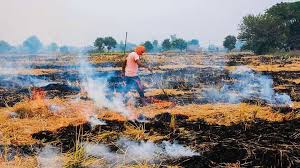Today Current Affairs: 8th November 2021 for UPSC IAS exams, State PSC exams, SSC CGL, State SSC, RRB, Railways, Banking Exam & IBPS, etc
Table of Contents
Uranium Enrichment : Iran

Iran’s atomic agency said that its stockpile of 20% enriched uranium has reached over 210 kilograms.
- In April 2021, the International Atomic Energy Agency (IAEA) said Iran had begun the process of enriching uranium to 60% fissile purity at an above-ground nuclear plant at Natanz.
- Under the historic 2015 nuclear deal between Iran and the World Powers, Iran was not meant to enrich uranium above 3.67%. Enriched uranium above 90% can be used for nuclear weapons.
Uranium Enrichment:
- Natural uranium consists of two different isotopes – nearly 99% U-238 and only around 0.7% of U-235.
- U-235 is a fissile material that can sustain a chain reaction in a nuclear reactor.
- Enrichment process increases the proportion of U-235 through the process of isotope separation (U-238 is separated from U-235).
- For nuclear weapons, enrichment is required upto 90% or more which is known as weapons-grade uranium.
- Low-enriched uranium, which typically has a 3-5% concentration of U-235, can be used to produce fuel for commercial nuclear power plants.
- Highly enriched uranium has a purity of 20% or more and is used in research reactors.
Asset Reconstruction Companies (ARCs): RBI

A Reserve Bank of India (RBI) committee has come out with a host of suggestions in a bid to streamline the functioning of Asset Reconstruction Companies (ARCs).
- The performance of the ARCs has so far remained lacklustre, both in ensuring recovery and in revival of businesses.
- Lenders could recover only about 14.29% of the amount owed by borrowers in respect of stressed assets sold to ARCs in the 2004-2013 period.
- To improve the performance of ARCs, the RBI had appointed the committee (headed by Sudarshan Sen) to examine the issues and recommend measures for enabling ARCs to meet the growing requirements of the financial sector.
Asset Reconstruction Companies (ARCs):
- It is a specialized financial institution that buys the Non Performing Assets (NPAs) from banks and financial institutions so that they can clean up their balance sheets.
- A NPA is a loan or advance for which the principal or interest payment remained overdue for a period of 90 days.
- Typically, ARCs buy banks’ bad loans by paying a portion as cash upfront (15% as mandated by the RBI), and issue security receipts (SRs) for the balance (85%).
- This helps banks to concentrate on normal banking activities. Banks, rather than going after the defaulters by wasting their time and effort, can sell the bad assets to the ARCs at a mutually agreed value.
- The Securitization and Reconstruction of Financial Assets and Enforcement of Security Interest (SARFAESI) Act, 2002 provides the legal basis for the setting up of ARCs in India.
- The Act helps reconstruction of bad assets without the intervention of courts. Since then, a large number of ARCs were formed and were registered with the RBI.
- RBI has got the power to regulate the ARCs.
Khasi Inheritance Of Property Bill, 2021:

Last week, a district autonomous council in Meghalaya announced that it would introduce the ‘Khasi Inheritance of Property Bill, 2021.
- It is aimed at “equitable distribution” of parental property among siblings in the Khasi community.
- If implemented, the proposed Bill would modify an age-old customary practice of inheritance of the matrilineal Khasi tribe.
Aims and Objectives of the Bill:
- Equitable distribution” of parental property among siblings – both male and female.
- Let parents decide who they want their property to inherit.
- Prevent a sibling from getting parental property if they marry a non-Khasi and accept the spouse’s customs and culture.
- Custodianship is often misconstrued as ownership vested in just one person, that is the youngest daughter. This custodianship comes with the responsibility to care for aged parents, unmarried or destitute siblings and other clan members.
- Moreover, the custodian cannot buy or sell the land, without taking permission from her maternal uncle.
- Also, most of the property is clan property or community property.
Cease-Fire Between Israel And The Palestinian Resistance Group Hamas In Gaza:

Egypt is seeking to reach an agreement on a cease-fire between Israel and the Palestinian resistance group Hamas in Gaza.
- The Agreement includes Long-term cease-fire, a prisoner swap, humanitarian aid to Gaza and reconstruction.
- Hamas is a Palestinian Islamist political organization and militant group that has waged war on Israel since the group’s 1987 founding, most notably through suicide bombings and rocket attacks.
- It seeks to replace Israel with a Palestinian state. It also governs Gaza independently of the Palestinian Authority.
- Gaza has been under a tightened Israeli blockade since 2007 in which most basic goods still enter the region under highly restricted measures.
- In May, an Israeli offensive left nearly 260 Palestinians dead and thousands wounded as well as a vast trail of destruction in Gaza. Palestinian resistance groups responded with rocket barrages into Israeli areas, killing at least 13 Israelis.
- The Gaza Strip is an entirely artificial creation that emerged in 1948 when roughly three-fourths of Palestine’s Arab population was displaced, in some cases expelled, during the course of Israel’s creation.
- And most of the refugees, they were sort of scattered across the region in neighboring countries like Jordan, Syria and Lebanon.
- Some went to the West Bank, which came under Jordanian rule after 1948. And a very large number went to the Gaza Strip, which is this tiny little coastal strip between Egypt and what is now Israel. Today, the population of Gaza, about 70% of Gaza’s population are refugees.
- Hamas forcibly took control over the Gaza Strip in 2007. Shortly thereafter, the Israelis imposed a complete closure on Gaza’s borders. They declared Gaza to be an enemy entity. Of course, Gaza is not a state.
- Hamas, of course, is viewed by Israel and by much of the international community as a terrorist organization, including the United States, for their history of attacks on civilians and so forth.
- Israel still occupies the West Bank, and although it pulled out of Gaza the UN still regards that piece of land as part of occupied territory.
- Israel claims the whole of Jerusalem as its capital, while the Palestinians claim East Jerusalem as the capital of a future Palestinian state.
- The US is one of only a handful of countries to recognise Israel’s claim to the whole of the city.
Edible Oil Prices:

Government has slashed the basic duty on crude palm oil, crude soyabean oil and crude sunflower oil from 2.5 percent to nil in a bid to reign in continuous rise in the cooking oil prices since past one year.
- The Agri-cess on these Oils has been brought down from 20 percent to 7.5 percent for crude palm oil and 5 percent for crude soyabean oil and crude sunflower oil.
- Consequent upon the above cut, the total duty is reduced to 7.5 percent for crude palm oil and 5 percent for crude soyabean oil and crude sunflower oil.
- The basic duty on RBD Palmolein Oil, Refined Soyabean and Refined Sunflower Oil has been slashed to 17.5 percent from the current 32.5 percent. Before reduction, the agricultural infrastructure cess on all forms of crude edible oils was 20 percent.
- Post reduction, the effective duty on crude palm oil will be 8.25 percent, crude soyabean oil and crude sunflower oil will be 5.5 percent each.
- To control prices of edible oils the government has rationalised import duties on palm oil, sunflower oil and soyabean oil, futures trading in mustard oil on NCDEX has been suspended and stock limits have been imposed.
Draft Mediation Bill For Public Consultation:

The government has issued a Draft Mediation Bill for Public Consultation.
- The draft Bill proposes for pre-litigation mediation and at the same time safeguards the interest of the litigants to approach the competent adjudicatory forums and courts in case an urgent relief is sought.
- As per the draft Bill, the successful outcome of mediation in the form of the Mediation Settlement Agreement has been made enforceable by law.
- Since the Mediation Settlement Agreement is out of the consensual agreement between the parties, the challenge to the same has been permitted on limited grounds.
- As per the draft bill, the mediation process protects the confidentiality of the mediation undertaken and provides for immunity in certain cases against its disclosure.
- The draft bill also says that registration of Mediation Settlement Agreement has been provided for with State, District and Taluk Legal Authorities within 90 days to ensure maintenance of authenticated records of the settlement so arrived.
- It also provides for the establishment of the Mediation Council of India.
Leopard Extinction:

The leopard (Panthera pardus) faces an 83% increased risk of extinction in North India due to roadkill, according to a new international study that quantifies the threat posed by roads to the survival of animal populations around the world.
- The leopard population of North India is at highest risk among four animal populations identified as being the most vulnerable to extinction in the next 50 years if observed roadkill levels persist.
- It is followed by the maned wolf and the little spotted cat, both of Brazil, and the brown hyena of southern Africa.
- At an 83% increased risk, the study estimates the time to the North Indian leopard population’s extinction at 33 years.
- Other populations found highly vulnerable include the lion-tailed macaque (Macaca silenus) and sloth bear (Melursus ursinus) in South India.
- For the North Indian leopard population, the study site covered Uttarakhand’s Rajaji National Park and Haridwar Conservation area.
- The International Union for Conservation of Nature (IUCN) recognises roadkill as a threat to 10 mammalian species, but the study notes that these were not among those found most vulnerable by the researchers.
Stubble Burning:

A study was conducted recently in six villages of Patiala, Punjab on Stubble Burning and impacts on health.
- Pollution from stubble burning significantly reduced lung function and was particularly harmful to rural women.
- The concentrations of PM2.5, the category of unburnt carbon particles considered most harmful to respiratory health, was found to increase more than twice between the two phases, from 100 g/m3 to 250 g/m3.
- During the crop residue burning period, a two to three-fold increase was noted in most of the respiratory symptoms including wheezing, breathlessness on exertion, cough in morning, cough at night, skin rashes, runny nose or itchiness of eyes etc. across all age groups (10-60 years).
- The highest number of respiratory complaints were reported by the elderly population (>40-60) and the lowest in the younger age group(>10-18) during crop burning period.
- There was decline in lung function with increase in PM2.5 concentration across all age groups even after controlling for several other exposure variables, such the influence of cooking fuel, ventilation, distance from road etc.
Stubble burning:
- It is a common practice followed by farmers to prepare fields for sowing of wheat in November as there is little time left between the harvesting of paddy and sowing of wheat.
- Stubble burning results in emission of harmful gases such carbon diaoxide, sulphur dioxide, nitrogen dioxide along with particulate matter.




